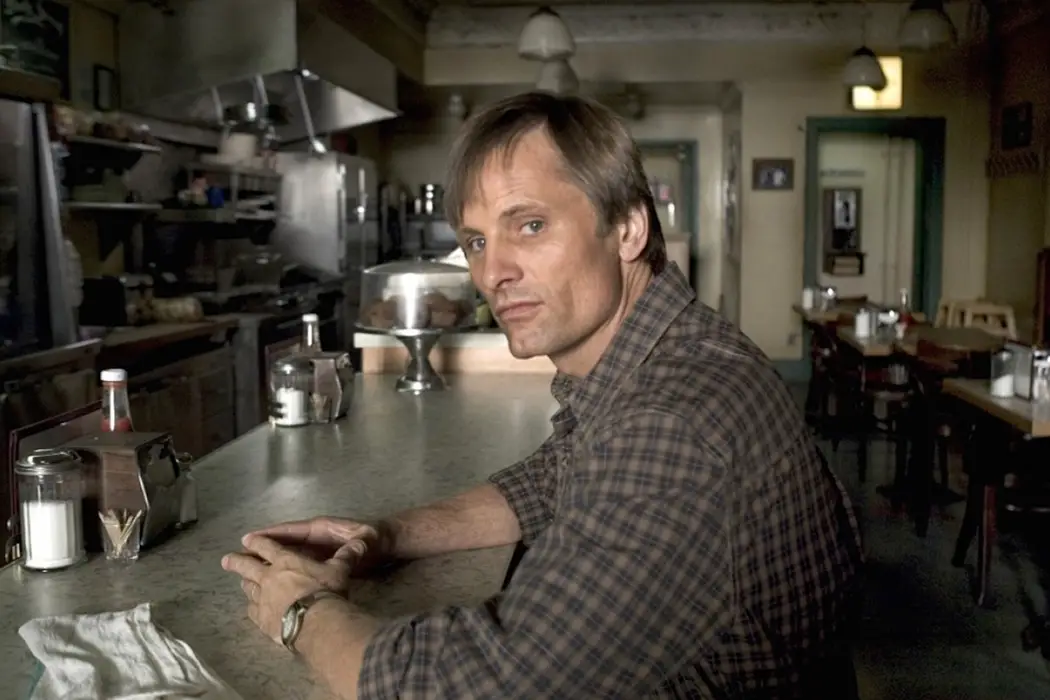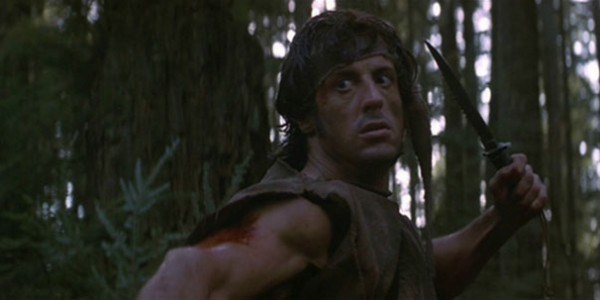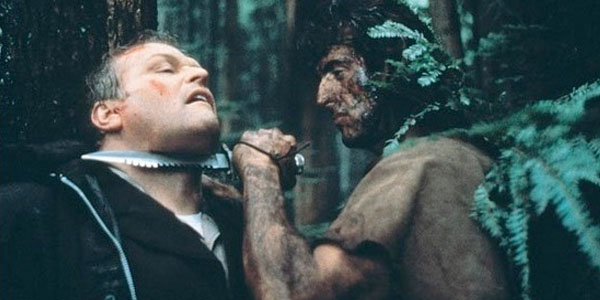Screenplays With Unconventional Connections

Zac Hestand earned a BA in Film from the University…
On the surface, First Blood and A History of Violence couldn’t be more different from one another. The former is the first installment of an iconic 1980’s action franchise, while the latter is an auteur-driven David Cronenberg movie. Two films that are separated by over two decades and two genres, but have surprising similarities.
First Blood centers around a drifter who protects himself from local law enforcement, and A History of Violence concerns a restaurant owner confronted by figures from his past. The characters differ from one another in background, geographical location (Stallone in Washington state and Mortensen in Indiana), and the obstacles they face.
The screenplays, however, by chance or clever planning, follow the same story beats. From beginning until the end, the two films share the same skeleton.
Both Have Troubled Pasts
Rambo and Tom make an effort to lead a quiet life. Tom runs a diner in a sleepy hamlet, and Rambo drifts into a rural area for peace and quiet. They seek the quiet to escape from their violent pasts.

Rambo is a former Green Beret sent to fight in Vietnam. He was the best in his unit, and to use the cliché, a force to be reckoned with. During his tour in Vietnam, he is captured and tortured by the enemy. He saw many comrades die, and he killed many people as well. Years later, Rambo is in rural Washington to find peace and quiet away from all of that chaos.
Tom, who went by a different name in the past, had Philadelphia mafia connections. He roughed people up and killed them. Like Rambo, he was surrounded by death and destruction. He too went to a small town to get away from all of the carnage. Unfortunately for both men, the quiet did not last.
Both Are Triggered To Commit Violence
The two films have these characters attempting to mind their own business and keep away from violent situations. Unfortunately, the screenplays toss an obstacle their way to push and provoke them to commit violence to defend themselves; an obstacle that switches on their past impulses, and makes it difficult to shut off.

Rambo, as a drifter, upsets the local police chief. The chief wants a clean, quiet town and sees a drifter as a nuisance. He gets Rambo on a charge of vagrancy and takes him to the station. The police rough him up, and this action triggers Vietnam flashbacks, sending Rambo on a rampage – a rampage that sets up the action of the film.
A History of Violence shows Tom closing up his diner for the night, but the routine is interrupted by the arrival of two strangers. They hold up the diner at gunpoint and harass Tom and his customers. The men make reference to Tom’s past while harassing folks, and Tom springs into action, taking both men down. This attack, like First Blood, sets up the film’s action.
Both Reunite With A Past Figure
Once the action sets the story in motion, the next obstacle is a figure from the past. Both characters bring attention to themselves with their acts of violence, and unfortunately for them, these figures cause more of a burden for them. Both of these figures hold vital information on both Tom and Rambo.

After the incident in the diner, Tom is visited by a man named Carl Fogarty (Ed Harris), who is curious how a small town diner owner could take down two trained killers. Fogarty continues to harass him, which triggers more violence. The violence climaxes with a graphic encounter between the two on Tom’s front lawn.
Unable to take down Rambo, the local cops link up with Col. Trautman (Richard Crenna), Rambo’s former CO (Commanding Officer) during Vietnam. Like Fogarty with Tom, Trautman knows what Rambo is capable of. Both past figures want these men for their own personal, though different, gain. Fogarty wants Tom to go back to a life of crime and Trautman wants Rambo to stop his rampage with rural cops, which makes Trautman look good to his superiors.
Both Surrender In The End
As each film progresses, the action and the violence must wind down after a certain point. After much fighting, Tom and Rambo are faced with a choice: to continue the violence or stop. Each film ends with them stopping their violence, but with different results.
After fighting intruders in his business and home, Tom heads to Philadelphia to meet his former boss (William Hurt). Tom tells him he’s had enough, and wants to go back to his small town life. In the end, he puts his fists down, and attempts to resettle back to his normal life, this time with his family now aware of his past actions.
Rambo meets Trautman in an abandoned building. Rambo breaks down, cries and confesses how lost and lonely he is in a civilian life. After opening up to Trautman, he puts down his weapon, surrenders and lets the authorities take him away.
Final Thoughts
First Blood and A History of Violence are unlikely companion pieces that would make a fun double-feature. Though different in style, both have the theme of men with violent pasts that catch up with them, and how they react when presented with violence. It’s a plot that fits with a variety of genres.
If you have no plans on a Saturday night, have a themed movie night. For an ambitious triple-feature, throw in last year’s Logan. It also fits the mold of violent characters trying to find peace, but are drawn back into a world of violence, and how they attempt to find peace again.
Do you agree with the connection of the two movies? What other beats do they follow? Please leave a comment below.
Does content like this matter to you?
Become a Member and support film journalism. Unlock access to all of Film Inquiry`s great articles. Join a community of like-minded readers who are passionate about cinema - get access to our private members Network, give back to independent filmmakers, and more.
Zac Hestand earned a BA in Film from the University of Nevada Las Vegas, and MA in English from the University of Sheffield. He is currently at work on his first book.













